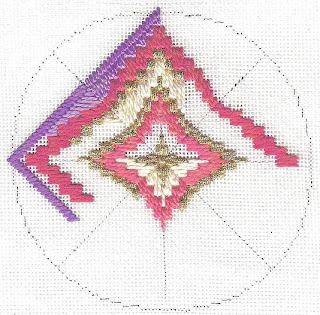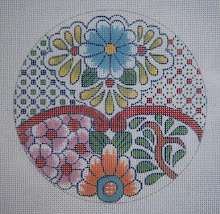
The new header is a part of my December "Crazy for Birthdays" heart ornament. The history and symbolism of the mistletoe, holly, and narcissus, as well as the turquoise are explained in posts on the other blog under "Birthday Crazy Quilts." The research on these was fascinating!!




















